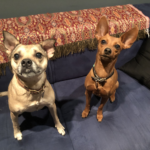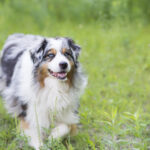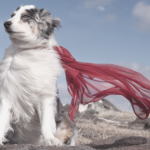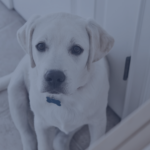lYou’ve just picked up your beautiful, wriggling, sweet-smelling little puppy, and you are loving every second of it. You’ve got everything ready: chew toys, that perfect tiny collar, and of course, your pup’s first ever trip to the vet scheduled.
First puppy visits to the veterinarian are fun and packed with information! Your vet will go over so many things in that 20-40 min appointment – potty training, diet, growth, deworming, vaccines, and more. It’s a lot of info!
One of the most important things your vet will discuss is the vaccine schedule and how that interacts with your puppy’s socialization period. This can be confusing, and the recommendations may have changed dramatically since the last time you had a puppy. Let’s hash this out…
What are puppy vaccines for?
The most important of the core vaccines for young puppies are for the prevention of parvo and distemper viruses. These are both included in the DHPP vaccine (Distemper, Hepatitis, Parainfluenza, and Parvovirus).
Distemper is becoming rare in most parts of the US. The virus causes respiratory, systemic, and sometimes neurologic disease. It is treatable, but can be fatal.
Parvo is a nasty, highly contagious virus that attacks the lining of the intestines, causing vomiting and diarrhea, often with blood. This leads to severe dehydration, weakness, and sometimes sepsis or overwhelming infection. Parvo is very treatable, but can be fatal in severe cases. Parvo is shed in the feces, and is very stable, remaining in the environment for at least 6 months. This makes it particularly risky, since it can – and does – hang out anywhere.
Rabies is a separate vaccine, and is required for all dogs in the US at 4 months of age. In addition, there are other vaccines such as bordetella, leptospirosis, lyme, and influenza, which may be recommended depending on where you live and your puppy’s lifestyle. Ask your veterinarian to determine which are appropriate for your pup.
Puppy Immunity
When a puppy is born, his own immune system is weak, but as he nurses from his mom he ingests antibodies through the milk. These antibodies will protect him against diseases that mom has been vaccinated for. At the same time, the antibodies will interfere with any vaccines given to the puppy, so there’s no point giving vaccines to very young pups.
Over time, the antibodies from mom start to fade, eventually falling below the level needed for protection and leaving puppy susceptible to disease if he is exposed. This critical period where mom’s antibodies aren’t high enough to protect, but are enough to interfere with vaccination is called the Window Period. During this time, puppies are most susceptible to disease. A little bit later, antibody levels will fall low enough that they will no longer interfere with vaccines. Now the puppy’s own immune system can respond to the vaccines and protect him against the diseases the vaccines are for.
In an individual puppy it is impossible to predict exactly when those maternal antibodies will fade enough to allow the vaccines to work, but by 16 weeks we can be sure they have. This is why we vaccinate every 3-4 weeks starting at 8 weeks all the way through 16 weeks. We are trying to catch the puppy as soon as possible after that critical window of susceptibility, when his body can respond to the vaccines. If we stop vaccinating before 16 weeks, that puppy may still not be able to respond to the vaccines on his own. If we don’t start vaccines at 8 weeks, we may have an extended period of susceptibility when the puppy doesn’t have protective antibodies from mom anymore, but still hasn’t received a vaccine to stimulate his own immunity.
Socialization period
The socialization period is a developmental stage of all puppies that lasts from 3 weeks through approximately 14 weeks, sometimes a little longer. This is the time in the pup’s life when he is most open to new experiences, exploring the world, and learning what is safe and what is not. If a puppy is exposed to all manner of people, dogs, noises, smells, sights, sounds, surfaces to walk on, and so on during this period, he is much more likely to be happy and confident as he matures. Puppies that are not exposed to a wide variety of people and places, are sequestered at home, or have bad experiences early on, are very likely to be fearful in new contexts as they mature. Unfortunately this fear can not only be debilitating for your sweet pup, but it can also lead to very serious behavior problems, including aggression. The socialization period is your chance to prevent potentially devastating outcomes!
The Balancing Act
So now you know that your puppy is not fully protected until his 16 week vaccines, and that there is some worrisome overlap with his critical socialization period. How do you get him socialized without putting him at unnecessary risk of illness? With caution and creativity! Keep in mind that there is no way to be 100% sure your puppy will not get parvo – you could bring it into the house on your feet. However, the risk of parvo with careful socialization is much lower than the risk of serious behavior problems with no socialization. Here are some general guidelines to safe socialization:
Absolute don’ts:
- Dog parks
- Beaches
- Walking down the street on a leash
- Neighborhood parks (unless carried or in a stroller, see below)
Alternatives
- Carrying or using a stroller to take a walk through your neighborhood or city.
- Visiting stores that allow dogs. Carry or place your pup in a cart. Think home improvement stores, banks, clothing stores, outdoor stores… ask the cashier as you come in if it’s ok. Usually people love seeing puppies!
- Going to friends’ houses, with as long as any dogs are healthy, vaccinated, and puppy-friendly. Also check that there have been no sick puppies at the house in the past year.
- Invite friends with puppy-friendly dogs over to your home for play dates!
- Throw puppy parties at your home, inviting folks over to meet your new addition. Throw costume parties with people wearing hats, sunglasses, wigs, etc., or using crutches, walkers, or skateboards. Try to invite people of all ages from babies and kids on up to seniors. It is important for puppies to learn that all shapes and ages of humans are safe and fun.
Take the puppy with you to school to pick up/drop off the kids. Keep him up in your arms but let the kids shower him with treats. - Ask your veterinarian about doing “happy visits” in between vaccine appointments so your puppy learns to love the vet! This will set your puppy up for a lifetime of health and wellness.
- If your work is dog-friendly, consider bringing your puppy to work with you, or stopping by at lunch or on your day off to visit with your coworkers.
- Last but certainly not least, puppy class and chaperoned puppy playgroups are one of the best (and safest) ways to get your puppy socialization. Well-run puppy classes will also help you with normal puppy antics – chewing, potty training, etc. Once your puppy makes friends, you can arrange play dates between classes, too! A word of caution: be choosy about who your puppy trainer will be. Dog training is an unregulated profession and unfortunately the wrong advice can really cause damage. Check out this article on choosing a trainer, and look for an Academy Trainer in your area here.
There is nothing more lovable than a beautiful squirming puppy toddling around your living room. So enjoy! But don’t forget make a plan—and follow it—to keep your puppy safe from both disease and behavioral issues as they grow. Safe socialization really, really matters. It is one of the best gifts you can give your future adult dog: the gift of confidence and joy.
Cet article est également disponible en français – cliquez ici.
